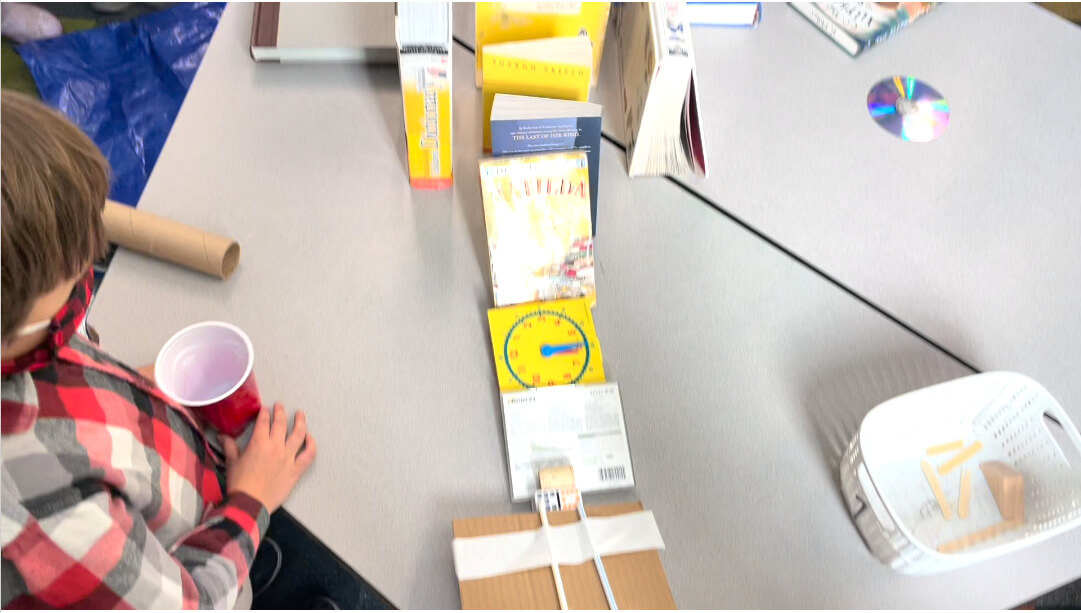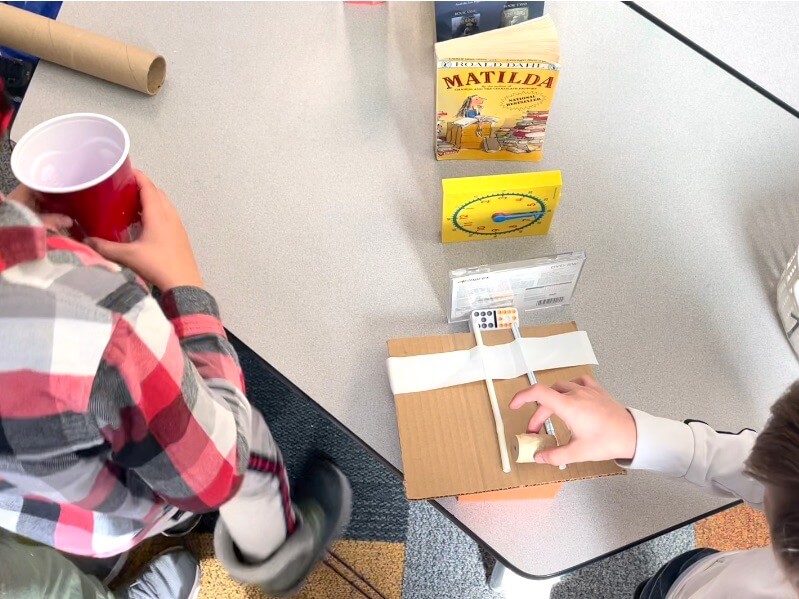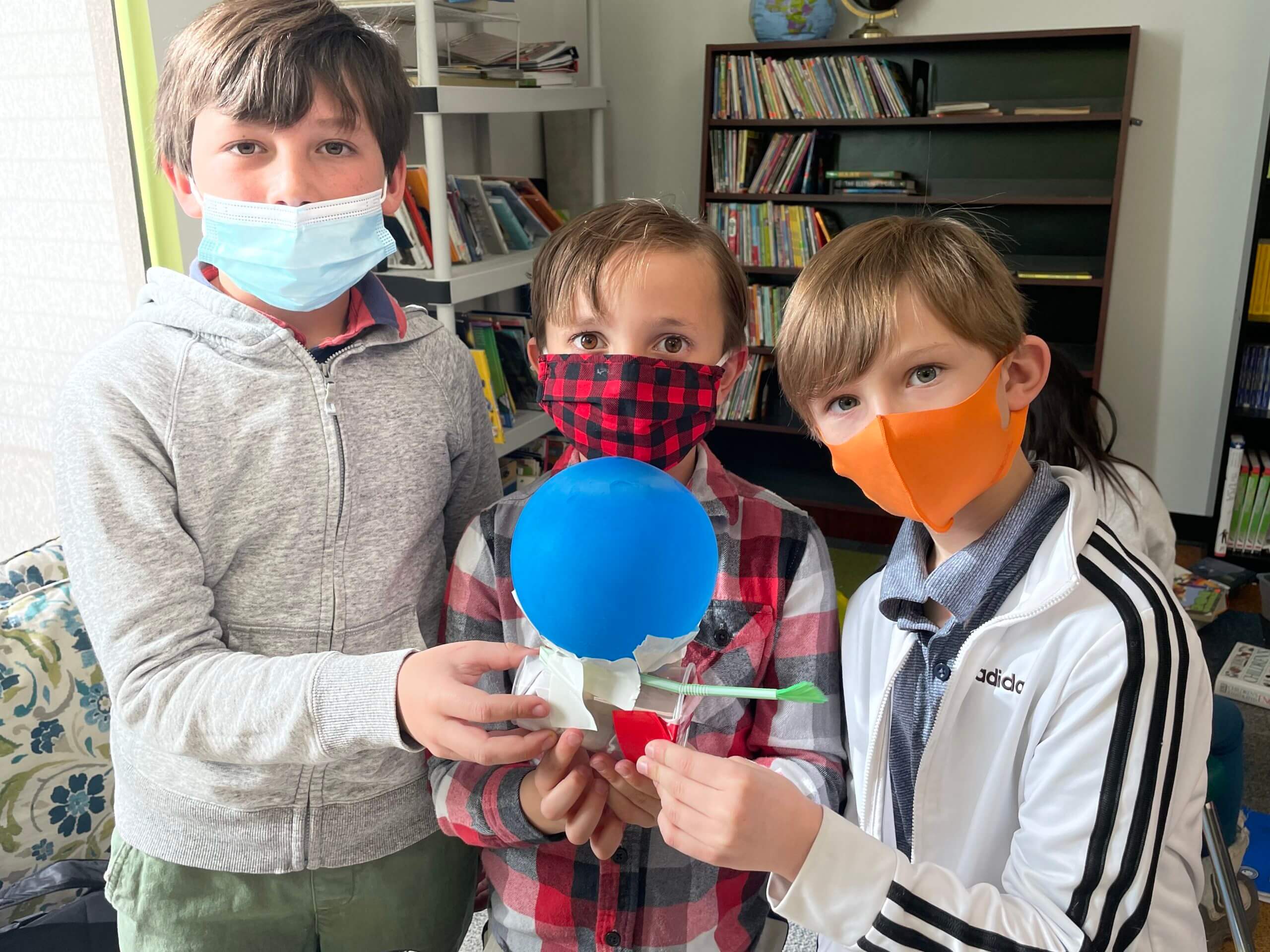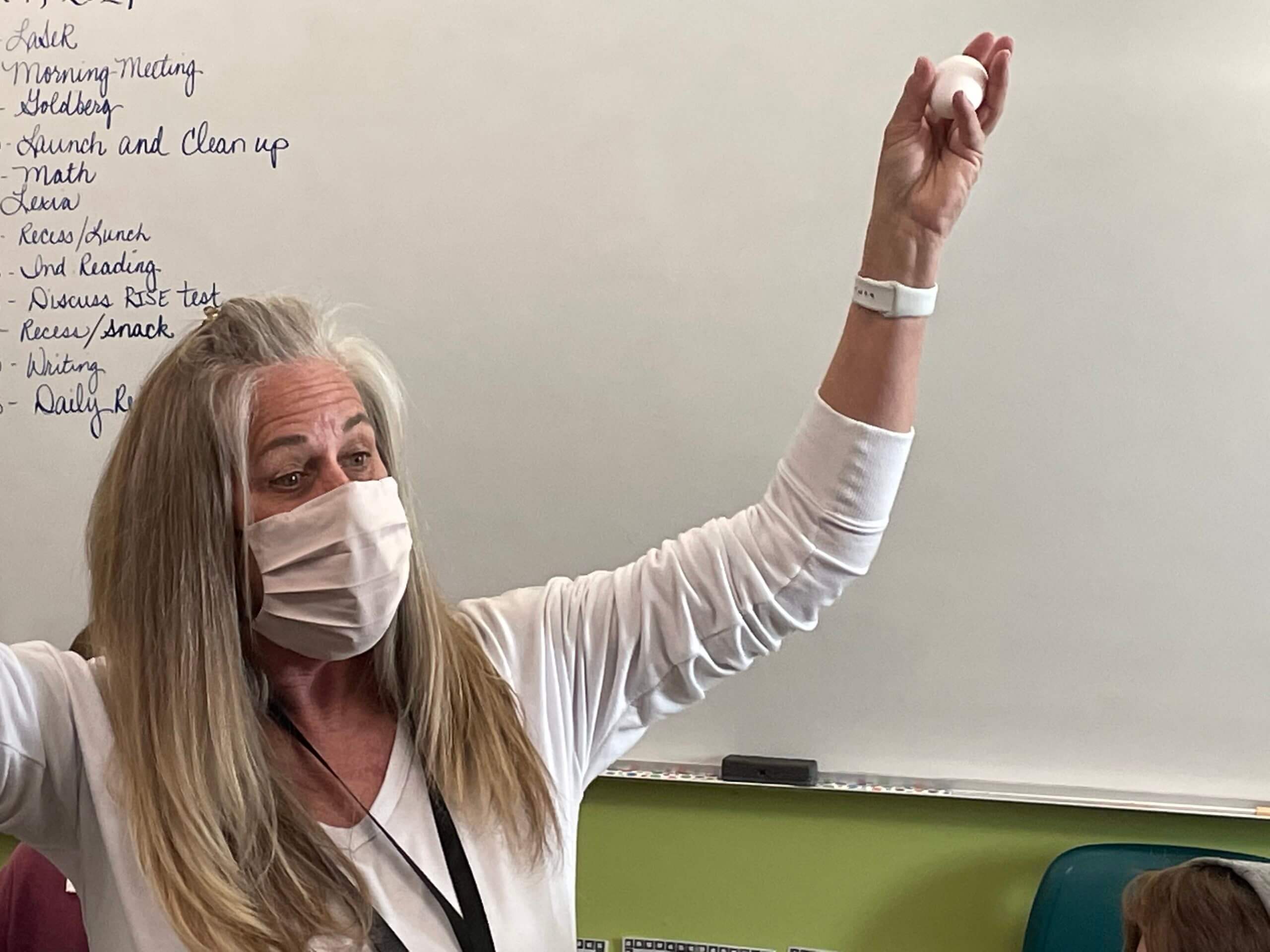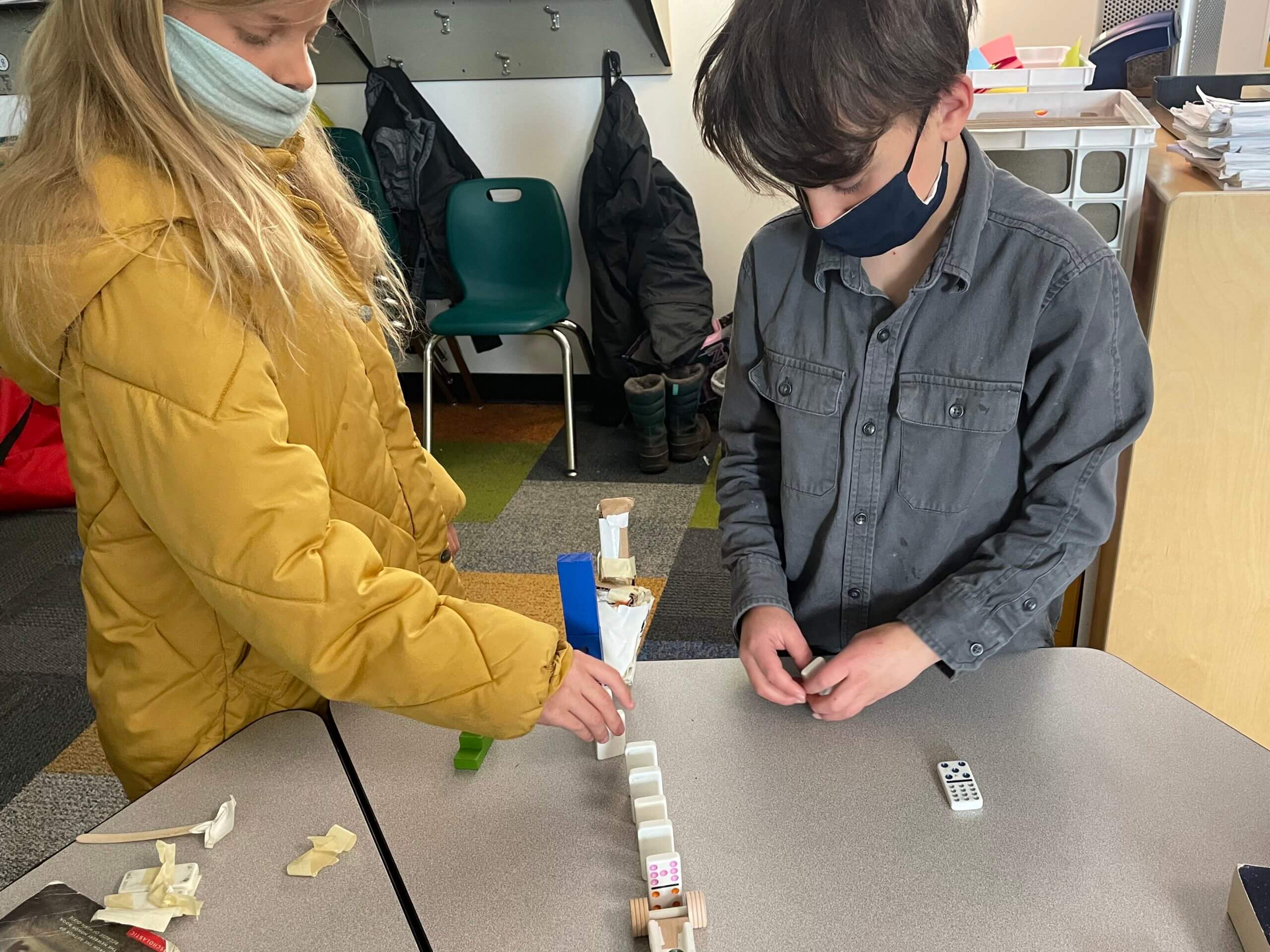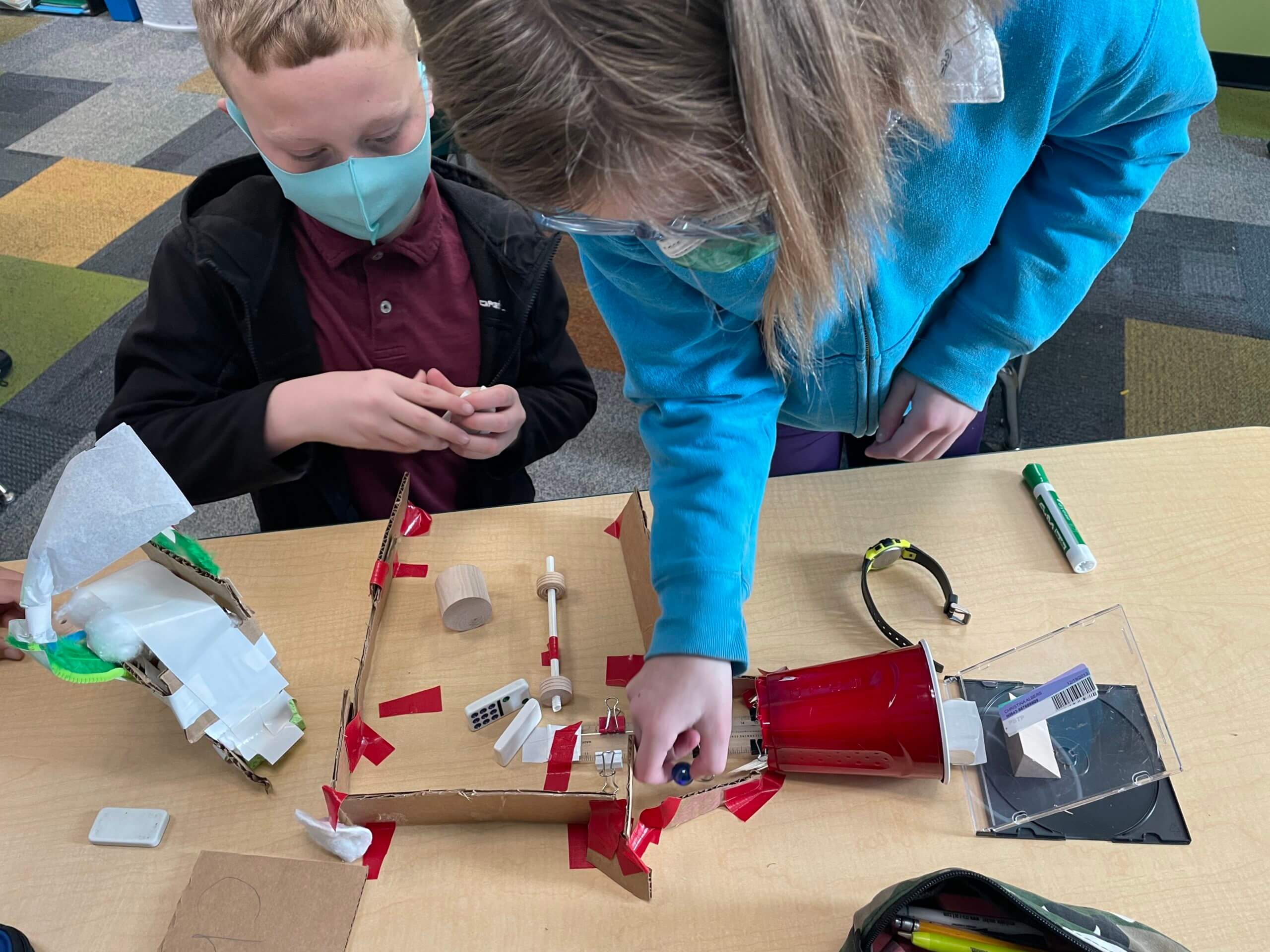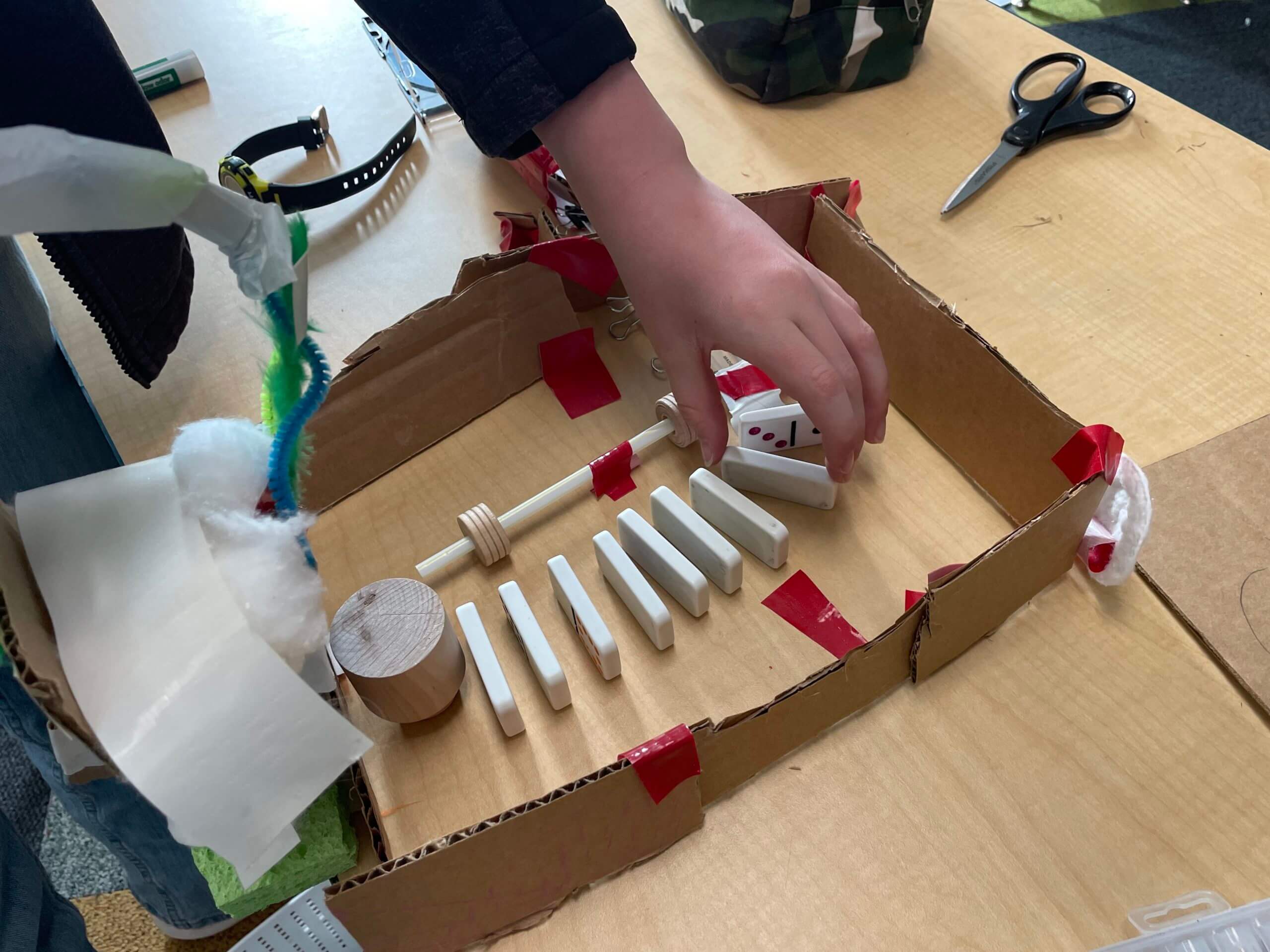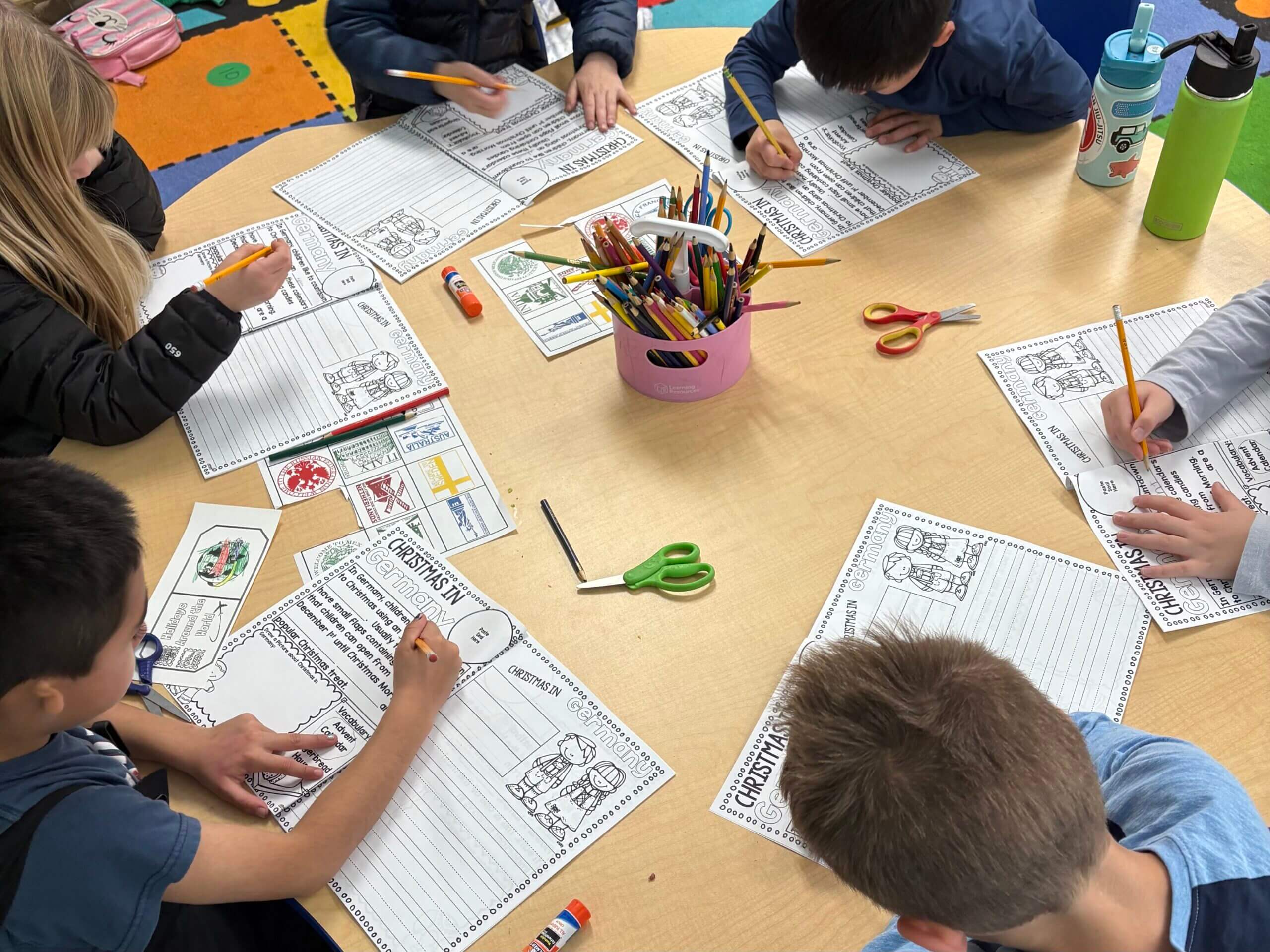First graders at WSD are “traveling” the globe to learn about how students from other…
Little did American cartoonist, Rube Goldberg, realize that his drawings of zany and complex contraptions would one day inspire competitions around the world and inform STEM and STEAM learning in schools. Third grade students at WSD were recently introduced to these famous machines, which are typically designed so that overly complicated chain reactions perform simple tasks. In planning, creating, testing, and adjusting their own Rube Goldberg machines, students built on a variety of concepts in physics, engineering, and design.
To get inspired, students watched videos and did activities to learn more about Rube Goldberg machines. Working in groups of 3 – 5, each team was given the same problem to solve — an astronaut (represented as an egg) that needed to be ejected from its spaceship and land unharmed. Each group was provided with the same materials, but team members were also allowed to bring in outside materials from home, all of which were recyclable or reusable. Even though machines were essentially performing the same function, each machine was unique and each reflected the creativity and ingenuity of the group.
The value of a Rube Goldberg machine project is wide reaching, as it incorporates multiple academic subjects and explicitly teaches concepts such as simple machines, cause and effect, force and motion, and energy and friction. It is also a perfect project to develop the softer skills of creativity and collaboration. Students learn to brainstorm ideas, communicate productively, give and receive feedback, and effectively implement the group’s design. And let’s not forget that failure is an essential part of the process. The machines rarely work on the first try, requiring students to troubleshoot and become even more creative!
